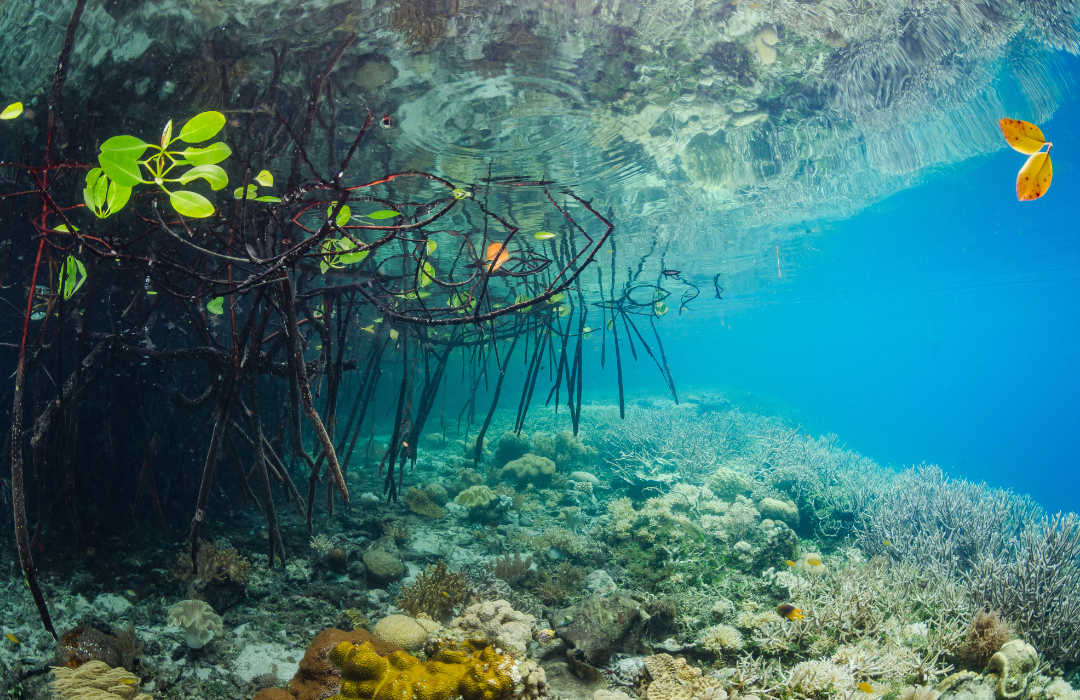
Methodologies.
-
Tidal Restoration of Blue Carbon Ecosystems Method concerns restoring natural tidal inundation to coastal blue carbon communities to restore vegetation, biomass, and blue carbon stocks. The method also accounts for avoided emissions that arise from the reintroduction of tidal flow. The method complements other international blue carbon methods (e.g., VERRA VM0033) to incentivise restoration of coastal wetlands, and provides a new modelled approach to estimating GHG reductions that can reduce costs associated with implementing projects.
Tidal Restoration of Blue Carbon Ecosystems Method (‘Australian Blue Carbon Method’) (Clean Energy Regulator, Australian Government, 2022)
-
Verified Carbon Standard method for restoration of coastal wetlands (VM0033) is broad in the scope of restoration activities permitted compared to the Australian method, which is only for tidal restoration. The VM0033 method requires measurements of carbon stock change through time. Although it is possible to use the method in Australia, issues with double counting that occur with international sale of carbon credits issued (VCUs) result in complexities.
VM0033 Methodology for Tidal Wetland and Seagrass Restoration, v2.0 (Verra, 2021)
-
Proposed Ungulate Control Methodology - Avoiding disturbance of soils and vegetation and their rehabilitation in coastal wetlands influenced by non-native ungulates is a new “blue carbon” method that will likely build on components of the abatement model developed in the “Tidal Introduction Blue Carbon Method.” A draft method has been submitted to Australia’s Clean Energy Regulator (CER) in August, 2022, and concerns avoiding disturbance of soils and vegetation and rehabilitating soils and vegetation of coastal wetlands influenced by non-native ungulates. Avoided disturbance from these feral ungulates would result in reduction of various greenhouse gas emissions. Management of non-native ungulates in coastal wetlands has the potential for large scale carbon abatement in Australia that would enhance biodiversity and provide incomes for coastal landholders, particularly Traditional Owners.
Proposed Feral Ungulate (hoofed animal) Control Methodology (Lovelock, 2021)
How does blue carbon work?
Blue carbon is a form of carbon sequestration in coastal and marine ecosystems - Below the high-water mark - Such as, mangrove forests, coastal wetlands, saltmarshes, and seagrass meadows.
As shown here, these coastal and marine ecosystems absorb carbon from the atmosphere in the same manner as forests do on land.
Reference: Inpex
Carbon dioxide is photosynthesised from the atmosphere and used to grow the plant or stored in the soils beneath the plant, until disturbed.
However, the frequent tidal inundation and layering of sediment means the capacity for blue carbon sequestration is much higher.
Furthermore, studies have shown that healthy and monitored coastal and marine ecosystems can remove and store far more carbon than terrestrial forests.
Currently there are at least two recognised blue carbon sequestration methodologies. One is an Australian standard and one is an international standard. Any registered blue carbon project must meet the requirements of a recognised methodology. Such as the Australian Blue Carbon Method developed in 2022 under the Emissions Reduction Fund and the Verified Carbon Standard.

